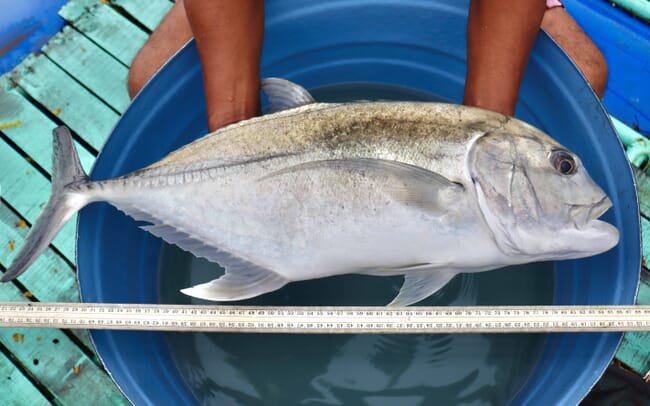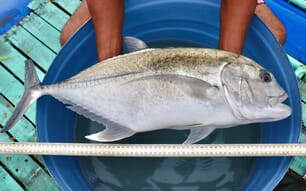
© ICAR-CMFRI
In a landmark achievement for mariculture research, researchers at the India-based ICAR-Central Marine Fisheries Research Institute (CMFRI) have succeeded in inducing the breeding and seed production of captive giant trevally (Caranx ignobilis).
The giant trevally is an important aquaculture species, suitable for farming in marine and estuarine cages, pens and coastal ponds. The species boasts growth rates higher than those of other popular farmed species, such as pompanos, and a tolerance for a wider range of salinity and water quality conditions.
“The achievement is a breakthrough in mariculture and is a significant advancement in the efforts to sustainably manage and conserve giant trevally as a new candidate species in the mariculture sector," said Dr A Gopalakrishnan, director of the CMFRI, in a press release.
The technology which facilitated this species development was lead by scientists at the Vizhinjam Regional Centre of ICAR-CMFRI in Vizhinjam, Thiruvananthapuram with the funding support of the Government of India. The breakthrough required extensive research due to the specific breeding requirements and the complex reproductive biology of giant trevally. This involved meticulous monitoring of the species’ behaviour, hormone administration and precise environmental control. Research was carried out under the leadership of scientists Ambarish P Gop, Dr M Sakthivel, and Dr B Santhosh.
“The initial success of the giant trevally's captive seed production is expected to pave the way for large-scale fish seed production and farming of this marine fish. Giant trevally is a fast-growing, hardy species that can be easily farmed using pellet diets throughout the culture period," said Dr Gopalakrishnan.
Following the success of their initial breeding trials, researchers at the CMFRI will now focus on the optimisation of breeding protocols to scale up production efficiency and larval rearing for the species.




